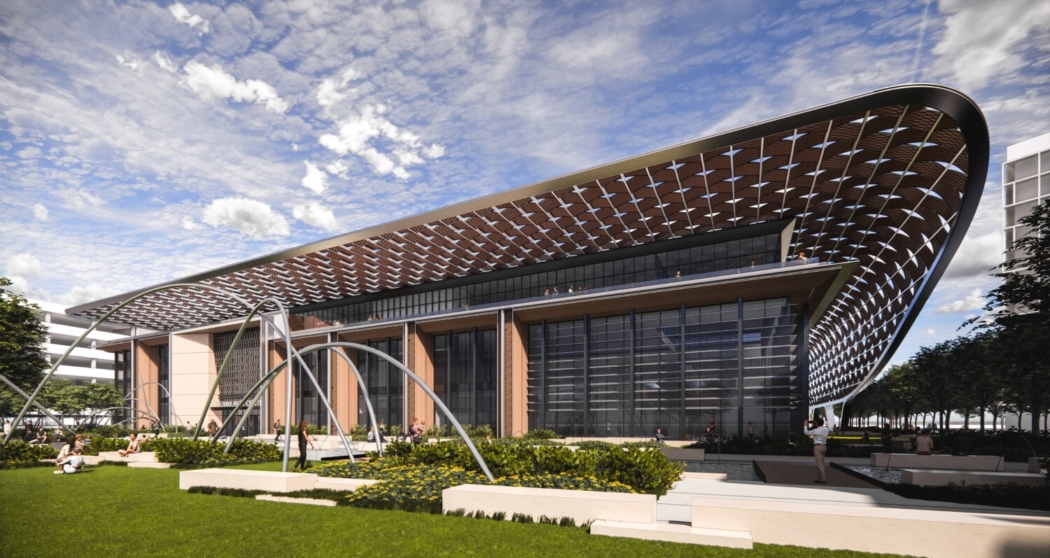Since the early 1900s, Cary has utilized voter-approved bonds to fuel its growth, maintain high financial standards, and preserve one of the region’s lowest tax rates. As we approach the November 5 vote on a $590 million Community Bond Referendum, it’s crucial to reflect on our town’s remarkable history of successful bond initiatives that have shaped Cary into the thriving community we call home.
Cary’s bond history stretches back over a century, with each referendum marking a significant step in our town’s evolution. In 1913, forward-thinking citizens approved a $25,000 bond to replace the wooden Cary High School with a modern brick structure, setting a precedent for investing in education. This spirit of progress continued through the decades, with each bond addressing the pressing needs of our growing community.

Wooden Cary High building
The 1980s saw Cary take bold steps towards infrastructure development. In 1981, voters greenlit a $20 million bond for Cary’s independent water system. Just five years later, in 1986, citizens approved a $27 million bond, allocating funds for water, wastewater, and street improvements.
The 1990s brought a focus on quality of life and essential services. The 1994 bond provided over $18 million for wastewater and parks, while the 1999 Cary Community Bonds allocated an impressive $139.1 million across parks, water systems, and streets – all without necessitating a tax increase.
As we entered the 2000s, Cary’s ambitions grew alongside its population. The 2003 bond, totaling $160 million, demonstrated our commitment to green spaces and connectivity, with $130 million for parks and $30 million for streets. In 2005, the Clean Water Bonds invested $120 million in wastewater facilities and open space initiatives, ensuring our infrastructure kept pace with our growth.
The 2012 Community Investment Bonds marked another milestone, with $80 million spread across transportation, parks, and fire services. This investment required a modest 4-cent tax increase, phased in over two years – a small price for significant community enhancements.
Most recently, the 2019 “Shaping Cary’s Tomorrow” Bonds allocated $225 million for transformative projects. The fruits of this investment are already evident by just visiting the spectacular Downtown Cary Park, a 7-acre feat that has quickly become a community focal point.
These bonds have given us the Cary we know and love today. Our extensive greenway system, state-of-the-art community centers, modern fire stations, and efficient road network all trace their roots to these voter-approved initiatives. The WakeMed Soccer Park, Cary Arts Center, and numerous neighborhood parks stand as testaments to our community’s commitment to quality of life and cultural enrichment.
Now, as we consider the 2024 referendum comprising a $560 million Parks and Recreation Bond and a $30 million Housing Bond, we stand on the shoulders of past successes. These proposals align seamlessly with the citizen-driven Imagine Cary Community Plan, our blueprint for 2040, and reflect years of careful planning and community input.
The Parks and Recreation Bond encompasses six transformative projects, including the $150 million Mills Park Community Center and the $300 million Sports & Recreation Community Center in South Hills. These facilities promise to redefine community engagement and recreational opportunities for generations to come.
Additionally, the bond will fund the continuation of the Walnut Creek Greenway, expand the Cary Tennis Park, create an Asian Garden celebrating our diversity, and develop a Nature Park on Earnest Jones Road. Each project addresses specific, long-identified needs in our community.
The $30 million Housing Bond tackles another critical issue, supporting initiatives for lower-income residents and ensuring Cary remains accessible to all. This comprehensive approach to housing affordability demonstrates our commitment to an inclusive community.
While the proposed 9-cent increase in the property tax rate, implemented gradually over several years, may give some pause, we must view it as an investment in our community’s future. Just as past generations stepped up to fund the amenities we enjoy today, it’s our turn to shape Cary’s tomorrow.
These investments will pay dividends for generations, attracting new residents and businesses, strengthening our tax base, and enhancing our quality of life. They represent more than just buildings and parks; they embody our commitment to a thriving, inclusive community.
As we approach the November vote, we urge every Cary resident to consider the long-term benefits of these bonds. Our history of successful bond initiatives has proven time and again that when we invest in our community, the returns are immeasurable. Let’s take hold of this opportunity to continue investing in Cary’s legacy of forward-thinking planning and fiscal responsibility, ensuring it remains the exceptional community we all love for years to come.







